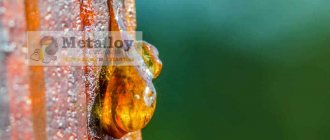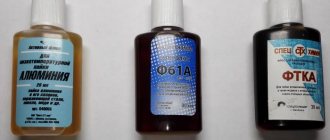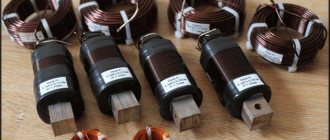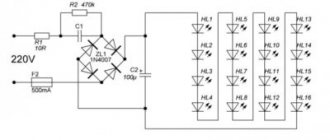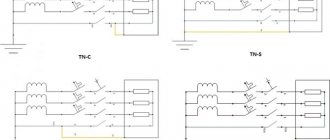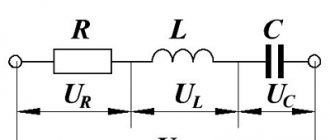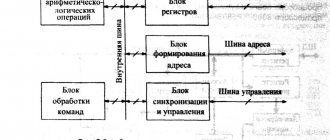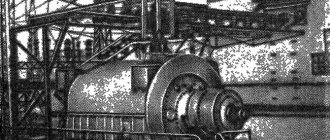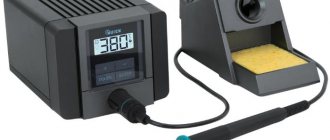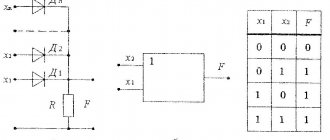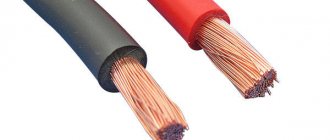What is solder fat
Don't let the word "fat" confuse anyone. Flux has nothing to do with organic matter. In fact, the pancreas is a chemical combination of various reagents. In its appearance and some properties the substance resembles lard. In practice, two types of flux are used: neutral and active flux.
Advantages
Specialists and radio amateurs choose soldering oil because of a number of its advantages:
- flux ensures uniform coverage of the soldering area with solder;
- Tinning metal surfaces helps achieve a mirror effect;
- the high viscosity of the substance allows you to maintain an accurate dosage within the intended limits;
- after soldering is completed, excess gel is easily washed off with water or a special solvent;
- market availability and low price are some of the attractive features of PG.
Flaws
- The pancreas has an unpleasant odor, which is especially active during soldering;
- Active flux is aggressive towards thin contacts of electronic parts;
- Fumes from molten flux are harmful to breathing. When working, you need to use personal protective equipment (gauze bandage, glasses).
Advantages and disadvantages
Active flux has the following advantages:
- superior in soldering quality to other fluxes;
- residues are washed off with water or solvents;
- capable of providing soldering of heavily oxidized parts and surfaces;
- affordable;
- long shelf life.
The disadvantages of active fat include harmful fumes when heated and the possibility of corrosion of the joint.
Neutral soldering flux has its advantages:
- provides a high-quality compound, second only to active fat;
- easily removable residues;
- is a dielectric;
- cheapness;
- does not contain hazardous and harmful substances;
- there is no risk of corrosion at the soldering site;
- shelf-life Unlimited.
The disadvantages of a neutral composition include:
- inapplicability to heavily oxidized surfaces;
- generation of solid waste that must be flushed away.
Despite the pronounced dielectric properties, the substance has a finite resistivity. Its remains must be removed, as they can distort the parameters of low-current electrical circuits.
Composition of solder fat, physical and chemical properties
Neutral flux is an alloy of rosin and stearin. Active solder fat is a complex composition. This is paraffin, petroleum jelly, zinc chloride and ammonium mixed with dielectric water.
Soldering gun
The gel applied to the contacts of radio components becomes like a form that the molten solder takes. The properties of the PG provide an ideal flat surface of the applied metal. The solder spreads in an even layer without bumps or depressions.
The viscous structure of the flux allows you to initially outline the contours of future soldering. When the soldering iron tip is heated, the flux liquefies, which helps the solder softly and quickly take the desired shape.
Important! The properties of solder gel make it possible to create connections between metal parts of complex configurations.
How to solder with rosin
In general terms, the soldering process consists of the following operations:
- Mechanical cleaning of joined surfaces;
- Warming up the soldering iron tip;
- Heating of connected surfaces;
- Treatment of the sting with rosin;
- Surface treatment with rosin;
- Coating the tip with solder (tinning);
- Connecting parts and covering the joint and adjacent areas with solder.
- Cooling the connection.
Now, more details about each operation?
- Rosin is capable of dissolving oxide films and partially reducing them to metal. If the surface of the parts to be joined is not covered with visible dirt, this operation can be skipped. It is necessary when dirt or oxides cover the surface so much that they prevent it from being wetted by molten rosin and then solder.
- It was previously mentioned that the temperature at which rosin begins to soften is around 55 – 70ºC. But in order to reliably cover the soldering iron tip and the parts being connected, it must be heated to 100 - 130ºC. The criterion for a sufficient tip temperature is its free penetration into the solid rosin mass with the appearance of a slight haze.
- The need to heat the surfaces to be joined depends very much on their size. If you have thin wires to solder, you can skip this operation. You must understand that on a cold surface the rosin and solder will rapidly cool and solidify. As a result, it will not be possible to achieve dissolution of oxides with rosin and sufficient spreading of solder. Therefore, before starting soldering, it is necessary to assess whether it is possible to warm up the parts already during flux treatment or whether this must be done first.
- If the soldering iron is being used for the first time or has not been used for a long time, you can go over the tip with a wire brush or fine sandpaper. But this is required in the most advanced cases. Usually it is enough to heat it up and treat it with rosin, and then cover it with a layer of tin - tin it. Now the tip is ready for use.
If the break in work was short, and the tip remained covered with solder, tinning is not required, just heat it and dip it in rosin.
Next, we prepare the surface of the parts for soldering. As already mentioned, it may be necessary to heat the joint surfaces of the parts being connected. This is determined by their massiveness and the size of the soldering iron tip. If the tip is more massive than the parts, you can do without preheating before soldering, but do it directly during the processing of the parts with rosin.
We fix the surfaces to be joined in the position in which they will be mounted, heat them if necessary, treat them with flux and then apply molten solder. Using the soldering iron tip, we help it spread over the joint and adjacent areas, and let the joint cool.
The soldering process is completed.
Overview of species
Soldering flux - what is it and what is it for?
There are two types of fat flux:
- Passive (neutral).
- Active.
Passive
Stearic-rosin flux is called neutral fat. It is used for soldering printed circuit boards of mobile phones and other complex electronic devices. Flux removes the oxide film of the metal, removes various foreign and oxide films during soldering of copper using lead-tin solder.
The product has found wide application not only in industry, but also in everyday life. The flux adheres well to any metal contacts. Due to its viscosity, accurate dosing of the material and high speed of solder application are achieved.
The gel is applied with a wooden stick, toothpick or match. At the end of soldering, the remaining flux is washed off with Galosh gasoline, isopropanol or a special remover.
Soldering fat neutral
Active
Active flux is used for soldering heavily corroded parts made of different metals. The product is used to restore corroded contacts of radio components of devices that have been damaged by moisture.
A board that has been in water for some time is tried to remove rust as much as possible with alcohol. Active soldering flux is applied to contacts damaged by rust. They are then soldered with solder. The remaining gel is washed off with warm water.
Active flux
Features of choice
To decide on the type of flux, you should know what it is for. If you plan to work with parts in normal condition, then it is enough to use a neutral product.
In cases where it is necessary to prepare the soldering of old radio components under difficult conditions, active fat is used.
Note! Upon completion of soldering work, the installation site must be thoroughly cleaned of active flux. The slightest residue can provoke the resumption of corrosion processes on the board.
Making solder fat with your own hands
Pulse soldering iron gun
On the Internet you can find a lot of recipes for making homemade solder fat. The product contains various chemical ingredients.
All recipes have one goal in common - to achieve maximum adhesion of the lead-tin alloy and displacement of oxides from the soldering process. Fat compounds are divided into passive and active compounds.
Making neutral fat
Neutral flux is a rosin-stearic mixture. Both reagents are commercially available. The manufacturing process consists of the following stages:
- Rosin is ground to a fine powder and placed in a glass jar.
- Stearin is also poured there. The mixture is made up in a 1:1 ratio.
- The jar with the contents is heated in the microwave.
- The oven is set to medium power mode and turned on for 4 minutes.
- The mixture turns into a homogeneous viscous mass.
Rosin for soldering
The resulting neutral solder grease may have insufficient viscosity. Some experts advise adding palm kernel oil (cooking fat). In this case, the proportion of the composition of the pancreas will be as follows:
- rosin - 3 hours;
- stearin – 2 hours;
- cooking oil – 1 tsp.
The addition of palm kernel oil gives the product a density that makes the gel convenient for loading it into a syringe.
Production of active solder fat
To make active flux you will need the following components:
- paraffin;
- zinc chloride;
- deionized water;
- petrolatum;
- ammonium chloride.
Paraffin
The substance is a by-product of oil refining. It is a white plastic fusible material. You can buy paraffin at household chemical stores.
Zinc chloride
The chemical is a white crystalline powder. Its melting point is 3200 C. Easily dissolves in water, alcohol, glycerin and acetone. The average price of zinc chloride is 220 rubles/kg.
Deionized water
Water is purified in a special installation from ions of impurities of various substances. It is most often purchased in pharmacies or online stores. The average price of 1 liter is 80 rubles.
Petrolatum
The purified petroleum product is sold in pharmacies and cosmetics stores. It is inexpensive - from 40 rubles. for the tuba.
Ammonium chloride
Ammonium chloride, or ammonia, is an odorless, white crystalline powder. Finding it on sale is not difficult. Half a kilo of the product can be bought for 150 rubles.
There are no exact instructions for preparing active solder fat. Usually all components are mixed in approximate proportions:
- Vaseline – 10%;
- zinc chloride – 10%;
- ammonia – 10%;
- paraffin – 28%;
- deionized water – 2%.
The resulting product is stored in a closed container (a glass jar with a lid), which is kept in a dark and cool place.
Homemade solder fat
How to use soldering oil
The viscous consistency of the product makes it easier to apply flux to the desired soldering points. The flux is transferred with a toothpick or any convenient oblong object. Solder fat is loaded into the box of a disposable syringe. With its help, it is good to control the dosage of the gel.
Before applying flux, the soldering area is cleaned of various contaminants. To do this, use gauze swabs, clean rags or any cloth soaked in a detergent solution. As a last resort, wipe the contacts with alcohol.
Copper tinning with neutral fat
Important! Under no circumstances should traces of gel be left after soldering. Remaining fat is removed with special solvents and soap solution. Active fat is especially dangerous. Its particles can cause corrosion of connections of radio components.
Features of application and soldering
Like any other soldering agent, soldering flux has its own application characteristics. When using this type of flux, the following factors should be considered:
- Heated fat releases dangerous toxic fumes that have a dangerous effect on the respiratory and visual organs. Soldering must be done in a room with forced ventilation;
- To avoid the occurrence of corrosion processes in radio components after soldering, the board is thoroughly cleaned of flux residues;
- Do not use the active fat composition for soldering microprocessors and electronic parts with thin contacts;
- The best means for applying solder gel is a plastic syringe without a needle.
For those who have only used soldering oil once, flux becomes a must-have tool for soldering the most complex connections of printed circuit boards and simple radio circuits. Soldering fat can be purchased ready-made or made by yourself. It all depends on the capabilities and preferences of the home craftsman.
Features of choice
The choice of a specific composition is determined by the list of works, materials and sizes of parts to be soldered.
For soldering ordinary, not overly oxidized parts, you can safely choose a neutral soldering flux. It is less harmful and its residues are easier to remove. In addition, there is no risk of secondary corrosion processes caused by fat residues.
If parts and structures that are heavily corroded and contaminated are used, then active fat takes advantage.
Soldering wires with a soldering iron: how to do it right
It makes sense to evaluate the packaging of the formulations. If you do not have practical experience in using this flux, or the amount of work to be done is limited, then it is better to purchase small jars.
Soldering with neutral fat
After you are convinced of the high quality of the fat and its compliance with the intended list and scope of work, you can take large packages - per unit of weight they will cost significantly less.
